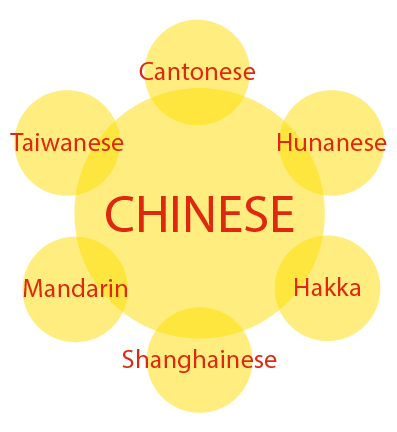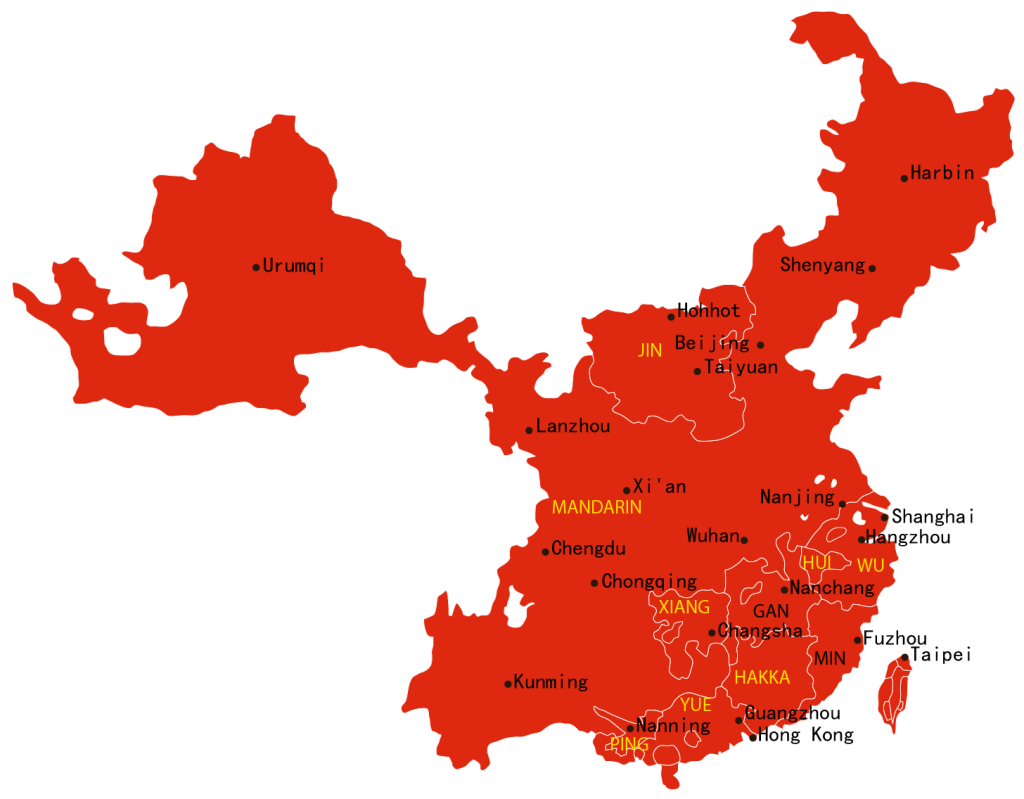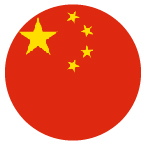Chinese Dialects
Chinese is spoken by around 16% of the world’s population – approximately 1.2 billion people around the globe speak some form of Chinese as their first language. It is an official language in 4 countries/regions worldwide including China, Hong Kong, Macau and Singapore.

Countries and their Chinese Dialects:

FACT
Mandarin is the most spoken dialect of Chinese. There are 800 million native Mandarin speakers and one out of five people speak it around the world.
Did you Know?
Mandarin is the most spoken dialect of Chinese. There are 800 million native Mandarin speakers and one out of five people speak it around the world.
“Chinese is officially the most spoken language in the world!”
English words have Chinese origin!
| Brainwashing | 洗腦 (Xǐnǎo) |
| Tea | 茶 (Chá) |
| Feng shui | 風水 (fēngshuǐ) |
| Kung fu | 功夫 (gung fu) |
| Yin Yang | 陰陽 (yīnyáng) |
Chinese is the Hardest Language to Learn
It may be a vital language when it comes to business and global matters, but in fact, Chinese is the one of the most difficult languages to learn. According to the United States Foreign Service Institute, it can take an English speaker more than 2,200 hours to learn Chinese!
A Tonal Language
Mandarin is the most spoken dialect of Chinese. There are 800 million native Mandarin speakers and one out of five people speak it around the world.
“Chinese Language Day is celebrated on April 20th!”
Population vs. Internet Penetration
Chinese Population:
1,420,062,022
Internet Users:
829,000,000
Penetration:
58.4%
As of 2019. Source:
www.internetworldstats.com
Did you Know?
There are some differences in Chinese dialects, especially with Cantonese and Hakka. These differences are mainly noticeable in informal writing styles.
Traditional vs Simplified Chinese
- The two primary Chinese writing systems.
- Simplified uses less characters than Traditional.
- Simplified uses less brushstrokes than Traditional.
- Simplified is mainly used in China Mainland,
- Traditional is used in Hong Kong, Macau, & Taiwan.
Chinese Translation Tips
- Avoid translating character by character. Make sure to read the entire sentence before translating.
- Be cautious of grammar! Chinese grammar is rather flexible and tense is generally represented through ‘adverbial’ or ‘auxiliary verbs’.
- Chinese has a shorter sentence structure compared to an English sentence!
- The active voice is very common in the Chinese language, unlike English which generally uses the passive voice.
- Words do not change in the Chinese language. Unlike European languages, words have a fixed form and do not change no matter where they’re placed in a sentence.
- Chinese is topic-prominent – meaning the thing the sentence is about is put first. Whereas English is subject-prominent so the doer of an action is placed first.
Are you looking for professional Chinese translation services? Get in touch with Pangea Global! We’ll hook you up with one of our professional linguists who will provide you with accurate and reliable Chinese localization services, copywriting, voice overs and more!





